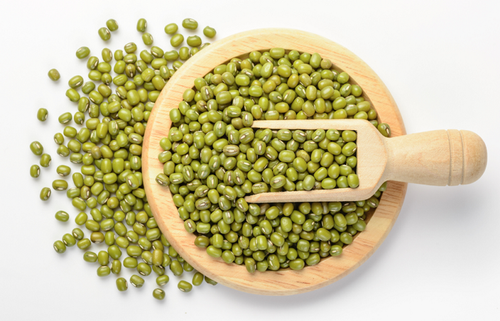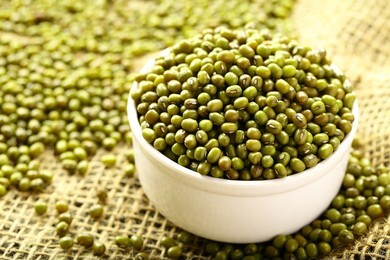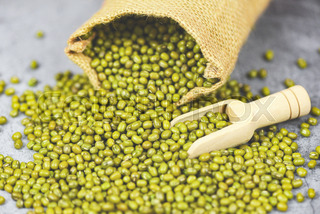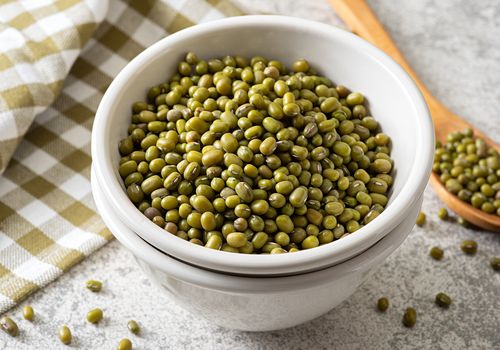




The mung bean , alternatively known as the green gram, maash (Persian: ماش), moong (from Sanskrit: मुद्ग, romanized: mudga), monggo, or munggo (Philippines), is a plant species in the legume family. The mung bean is mainly cultivated in East, Southeast and South Asia. It is used as an ingredient in both savoury and sweet dishes.
Although whole mung beans are also occasionally used in Indian cuisine, beans without skins are more commonly used. In Karnataka, Maharashtra, Gujarat, Kerala and Tamil Nadu, whole mung beans (called pachai payaru in Tamil, cherupayar in Malayalam, pesalu in Telugu and hesaru kaalu in Kannada) are commonly boiled to make a dry preparation often served with rice gruel kanji. It is called mūṅg in Hindi. In Sri Lanka, it is called mun in Sinhala. In Odia, it is called muga ḍāli. Hulled mung beans can also be used in a similar fashion as whole beans for the purpose of making sweet soups.
Summer Moong is a short duration mung bean pulse crop grown in northern India. Due to its short duration, it can fit well in between of many cropping systems. It is mainly cultivated in East and Southeast Asia and the Indian subcontinent. It is considered to be the hardiest of all pulse crops and requires a hot climate for germination and growth.